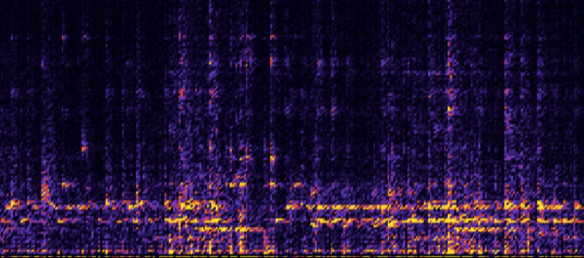I thought it might be wise to actually outline what the point of this blog is, as I’ve actually launched into it without a great deal of fanfare – I also noticed that my last blog received some attention, especially among composers and music buffs, with a few notions about harmonics and music intervals that aroused some interest, though probably posed more questions than provided definitive answers. One supposes that’s the nature of blogs – just thinking out loud and seeing what the world makes of it.
If I haven’t already mentioned it, I’m completing an honours year at the University of Western Sydney, specialising in music – this blog serves the dual purpose of both consolidating my thoughts about my research and also serving as a record for it. This may be an unconventional way to work, but I figure it can’t hurt to put it out there, and it’s been gratifying to receive a response or two from people who are as obviously into music as myself – thanks to John for his feedback on my thoughts about composing in fourths and fifths.
The basic tenet of my research is looking into the importance of timbre, and what I refer to as ‘spectral colour’, in music, especially as a compositional device. Although timbre can be easily defined as the quality which gives an instrument or indeed any sound-making device it’s distinctive ‘character’ (i.e. what makes a violin sound like a violin and not a trumpet, for example), ‘spectral colour’ tends to mean different things to different people. For serious music types, it indicates a school of musical thought that emerged at the Institut de Recherche et Coordination Acoustique/Musique (IRCAM) in Paris in the 1960s and 70s, usually associated with Gerard Grisey and Tristan Murail. For the uninitiated, Grisey and Murail took as their musical inspiration ‘sound evolving in time’, which appears to be kind of self-evident, until you realise they literally took the information from Fast Fourier Transforms (spectral analysis) of particular soundwaves, and then applied that across an entire orchestra. All well and good – a little bit like extreme macro photography in sound. And granted, some of this stuff is kind of interesting – take Grisey’s Partiels (1975) for example:
In case you missed it, Partiels is based on a FFT analysis of a low E1 (41.2 Hz) note on a trombone. If you can listen to the entire piece (and this is only part 1, incidentally), you’ll eventually hear all the high order ‘harmonics’ appear, all those screechy notes high up, mostly in the upper woodwind section of the orchestra. And there was plenty more where this came from – Tristan Murail’s Gondwana, Grisey’s Transitoires, and later, pieces by Iannis Xenakis, Iancu Dumitrescu and other names I can’t pronounce. But the one thing that stuck in my mind from listening to most of these pieces, was how downright scary and unpleasant many of them sounded, and how little they related to the idea I had in my head to what ‘spectral music’ was. I applaud the extraordinary effort that went into writing these pieces, and the analysis that I’ve read on some of them thus far is impressive, if exceedingly complex (try Francois Rosé’s essay Introduction to the Pitch Organisation of French Spectral Music for a bit of light reading). But I can’t say I enjoyed listening to many of them, and what I interpret as spectral music is a very different kettle of tuna altogether.
Whereas the French spectral school and its proponents seem to prescribe to reproducing the harmonic series to varying degrees by seemingly very complex and elaborate means, what I interpret as spectral colour heads in almost the opposite direction. When I hear the buzz of harmonics high up on say, an Indian tanpura or sitar, that is what I mean when I say spectral; when I hit a key on a piano with the sustain pedal held down, and strings in integer ratios of the first vibrate in sympathy, I consider this spectral; when I grab my trusty Epiphone Casino electric guitar and encourage it to ring and feedback when plugged into an amplifier, that to me is spectral; when I overdub two or more vocal lines of the same note on a multitrack recorder and they slip slightly out of phase revealing higher order harmonics, this is what I mean by spectral. These are all methods, to me, of revealing the harmonic spectrum, or tone colour, in all it’s glory. And this essentially is the gist of what my research is all about – using any or all of these techniques and foregrounding them sufficiently to use as a compositional device. The trick will be whether I can make it interesting enough…
Timbre, of course, is all the constituent harmonics and other bits of audio grit that make up a sounds overall ‘character’, which is of course interesting and relevant – if you wish to take it apart like that. But it’s a bit like the science experiment in high school, when you had to dissect a mouse, and take out it’s heart, and it’s spleen, and it’s liver, just to see how it worked. It was a perfectly healthy, happy (and alive) mouse, squeaking happily (or perhaps not) and now it’s just a pile of organs. I do understand that initially we have to do this to find these things out… but do we have to keep doing it, again and again? This is how I feel about some of the French ‘spectral’ music – it’s a bit like watching a car crash in extreme slow motion…
I think I’ll just play with the mouse and enjoy it for it’s own company. More soon…

